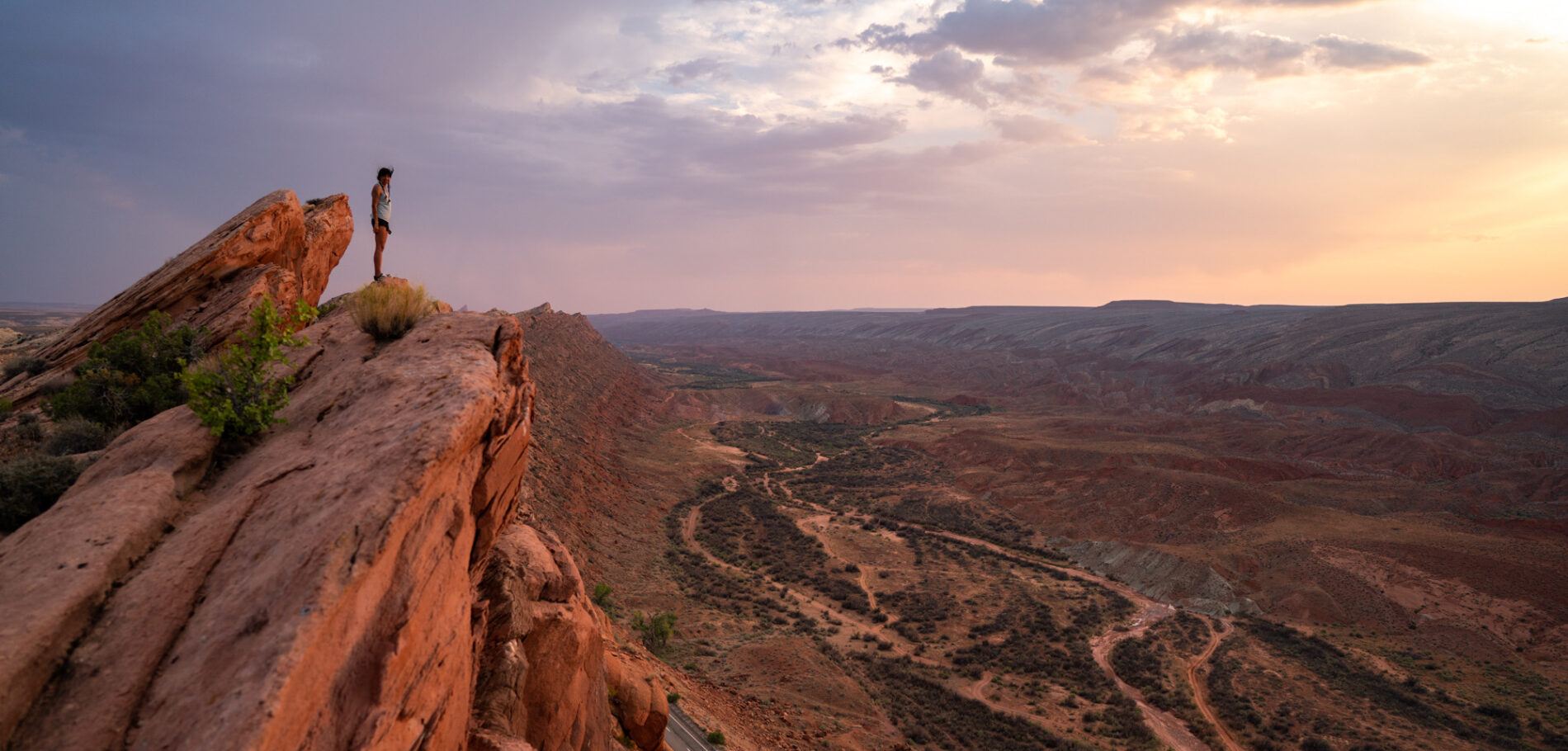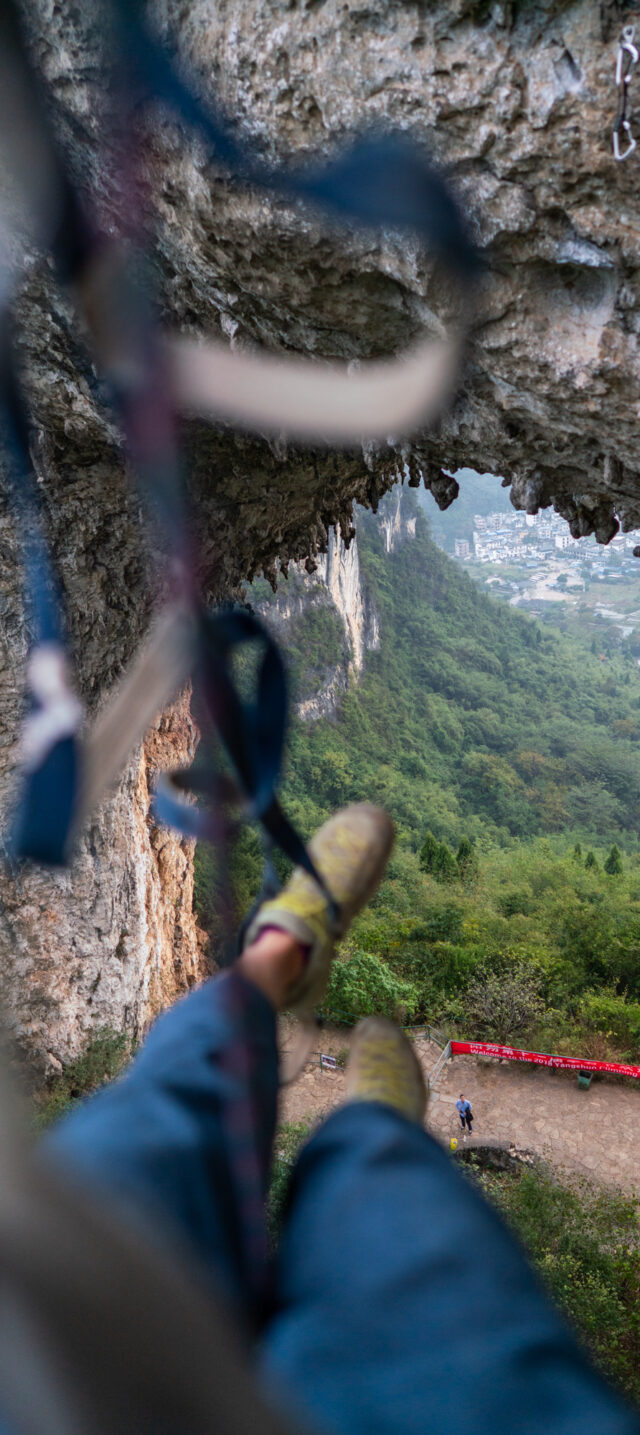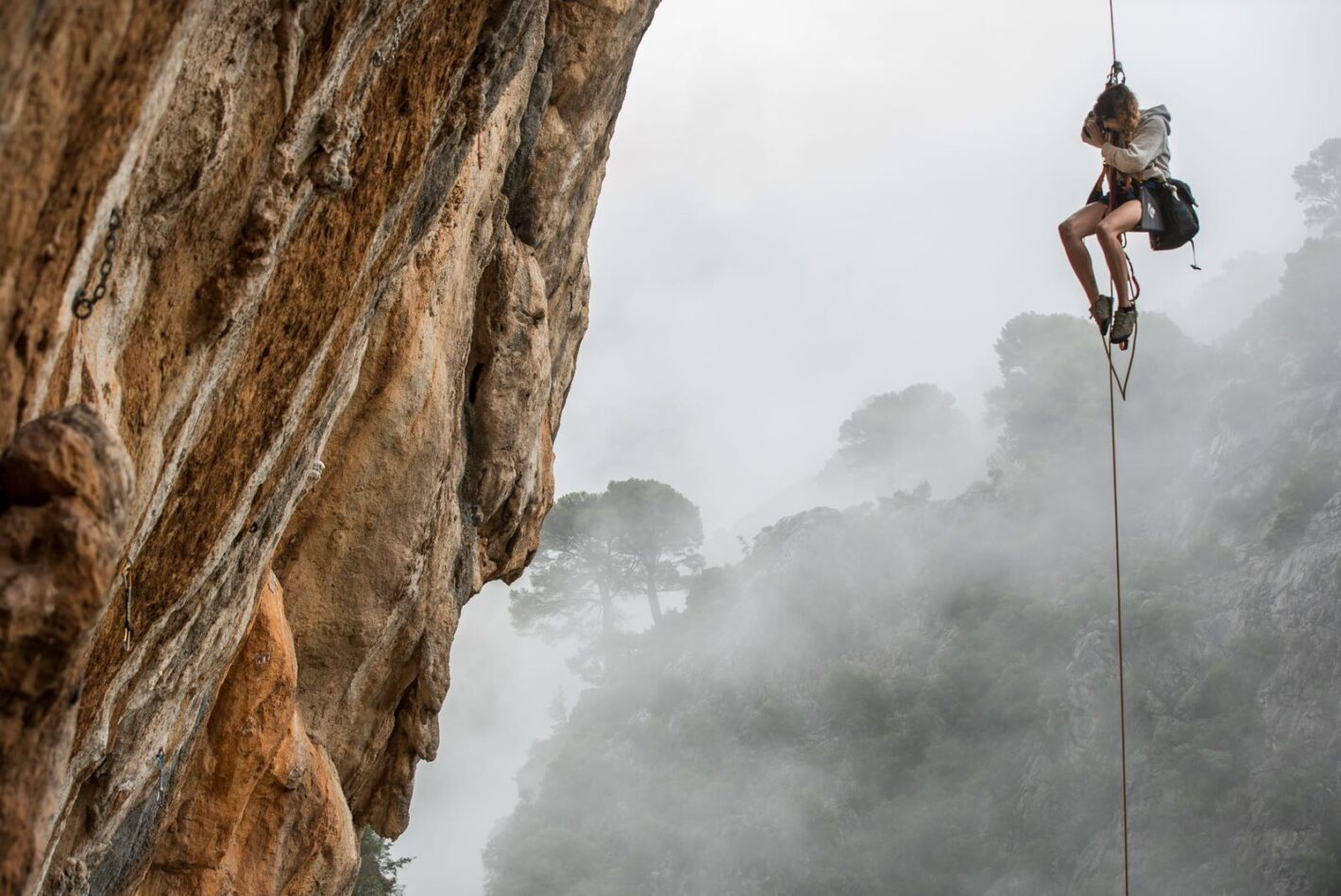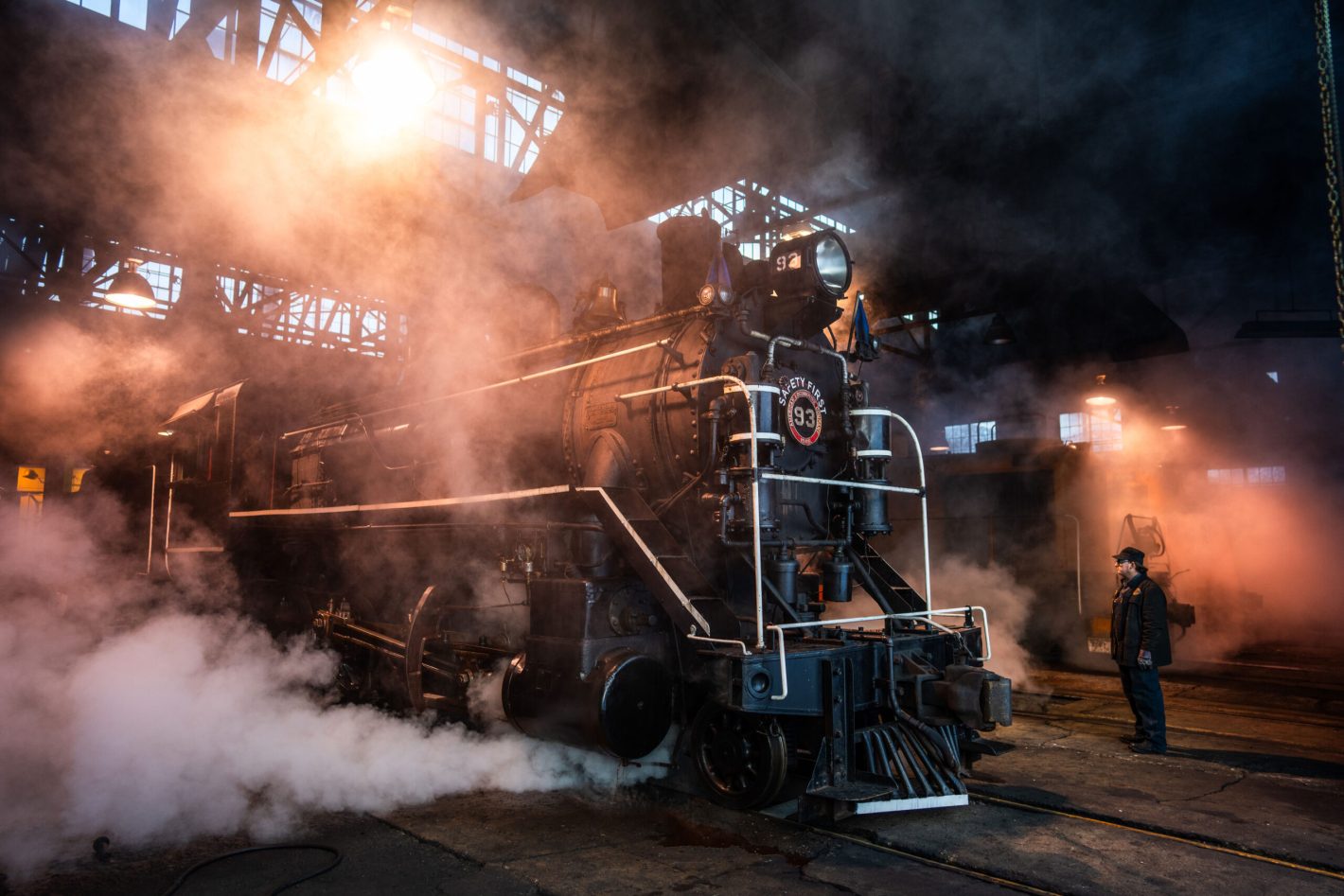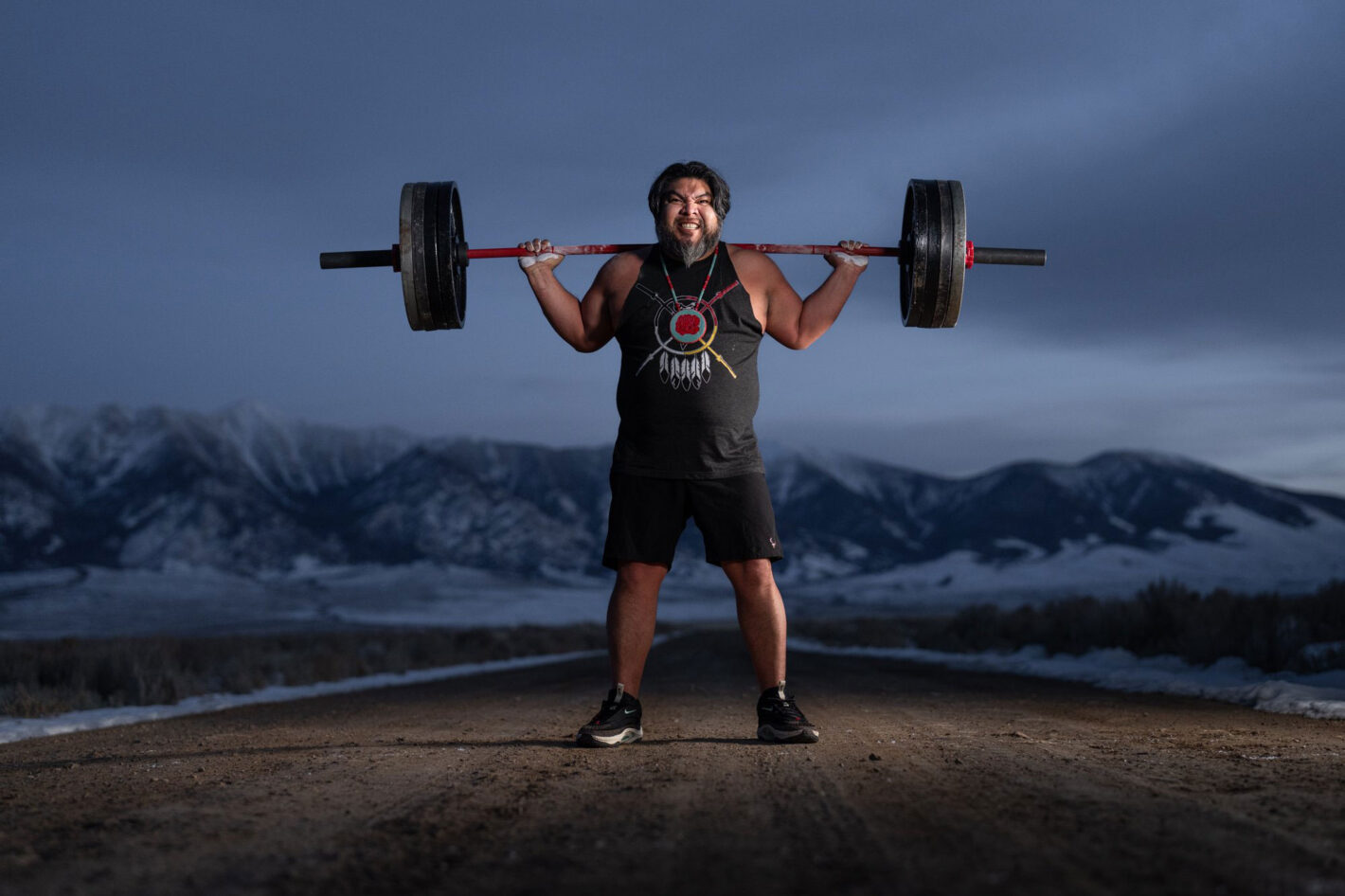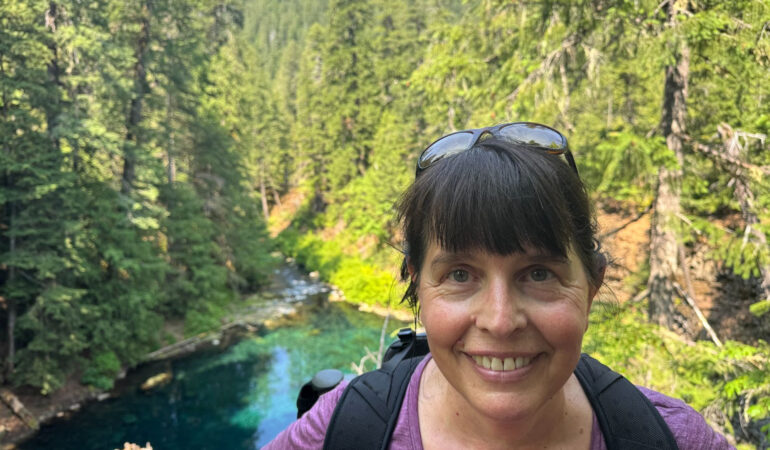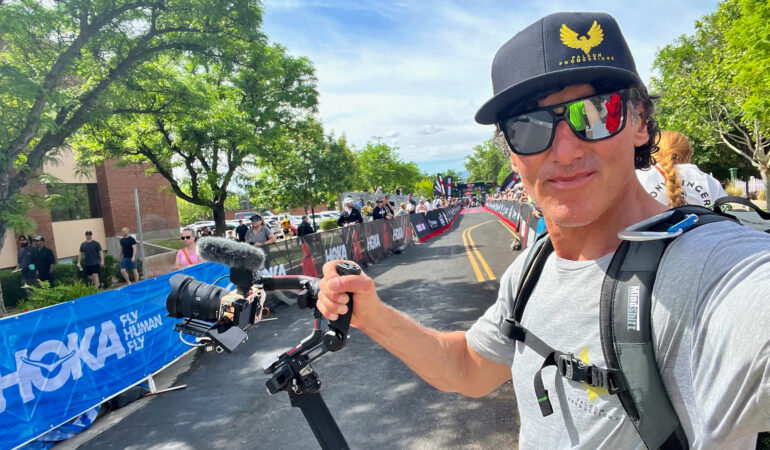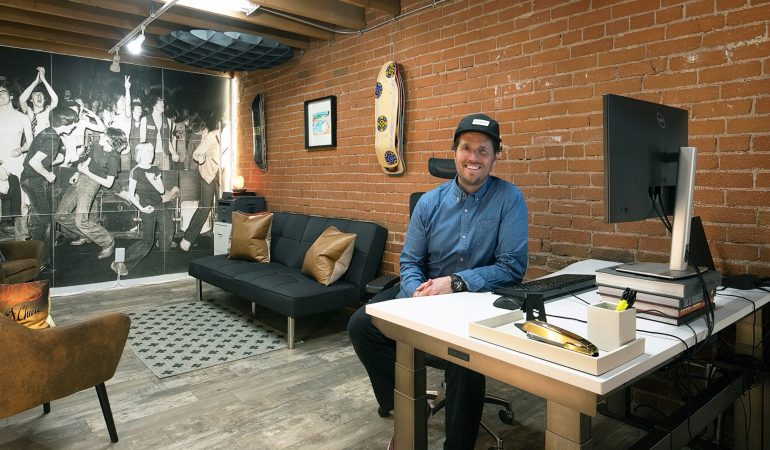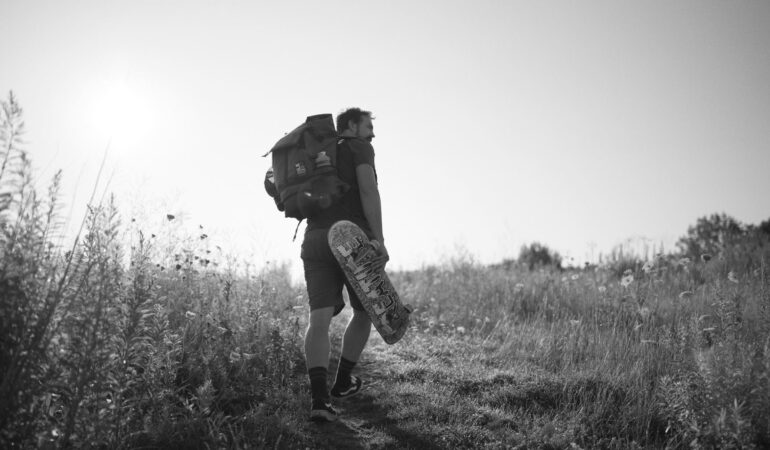Tara has worked as a director and a DP, and as a photographer and a camera operator. Her photography credits and film projects, include National Geographic, HBO Max, Amazon prime, Nikon, and Apple, not to mention the gamut of climbing publications and brands. The work allows her to fulfill a childhood obsession with light. “As a high school art dork, I’d write poems about light,” she laughs. It still drives her. “Way before I pick up my camera I’m thinking about how the light will cross the frame,” she says. “I don’t like manipulating images later—I want to make it how I saw it, and I do the prep work to make that happen.”
Tara’s climbing prowess is an invaluable tool in several ways. On smaller budget projects, she serves as her own rigger. Her climbing background helps when she’s working with other athletes, especially in more personal film work. “They are often more willing to trust me because I’m one of them,” she says.
